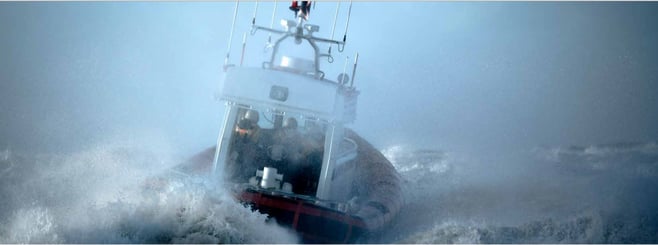Naval Vessel Command and Control Capability Upgrades, Is It Worth It?
While many countries’ naval fleets need immediate updates or replacements, we also find ourselves living in a world of increasing threats. How can large naval fleets keep up with the demands of aging fleets coupled with the downward pressure on defense budgets? Specifically, how do countries evaluate whether to invest in high costs associated with replacement vessels or modernise existing naval vessels?
Challenges and Concerns
Quoting from Defence IQ, U.S. Navy Captain James Dick, Program Manager at International Fleet Support and Ship Transfer says, “I think the first thing - which isn't new - is keeping up with the threat. Innovation makes that a challenge, and it is always a struggle to keep a warship relevant in a new threat environment. That's why implementation of an open architecture approach to combat systems is so critical -- it reduces the time and the cost to update and upgrade a ship's capabilities.”
“The second challenge is operational tempo. The demand for naval forces at sea isn't going down, it is going up. Having enough ships and enough steaming hours to keep those ships on station is a big challenge. That drives much of the maintenance that we have to do to keep the hull and mechanical systems in peak condition.
“It's very easy to defer maintenance for operational necessity, but eventually we pay the price -- and it's usually much cheaper if we pay it up front rather than wait until we have a catastrophic failure. We all need to have long-term maintenance and modernisation plans that optimise the service life of the platform and allow for budgeting for future maintenance needs.
“I think the third challenge is interoperability. We operate today in a very collaborative environment around the world. As more and more countries develop capable warfare systems, it is even more important that we stay aligned when it comes to interoperability. That doesn't mean everyone has to buy from the same manufacturer - but it's imperative that we continue the work to define common standards and protocols - whether for communication or networks - and that we use those to allow us to continue to work together.”
Gaps in current technology?
When discussing and elaborating on the gaps in currently used technologies the Captain believes the use of open architecture systems is a key consideration for the future.
Systems that will allow for easy
- integration,
- installation,
- updates, and
- upgrades will clearly be of essence going forward.
“The technology "gap" that I would be concerned about is how difficult (or easy) it is to update or replace a weapon system component on a platform. If the insertion of new capability can keep pace with the development of the threat, then the gap is minimised.
"That's why the move to open architecture systems, modular weapons payloads, and pre-planned infrastructure so important to getting the full return on the investments every navy makes in its platforms.
“The lessons we've identified about the need for rapid upgrade with minimal cost/ship impact are the ones that we have to carry forward. They will be the keys to keeping our naval platforms relevant throughout the 21st century.”
Read more about Savox Communications 'Win" for Minesweeper Class Upgrade
Subcribe to our blog
Be among the first of your peers to hear about the new products and solutions from Savox.

